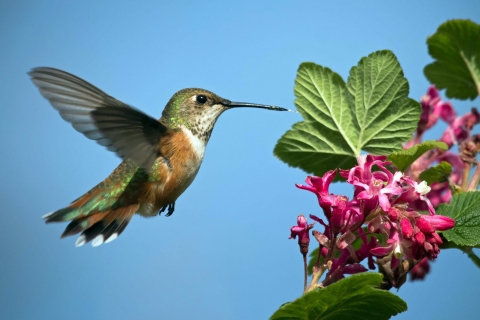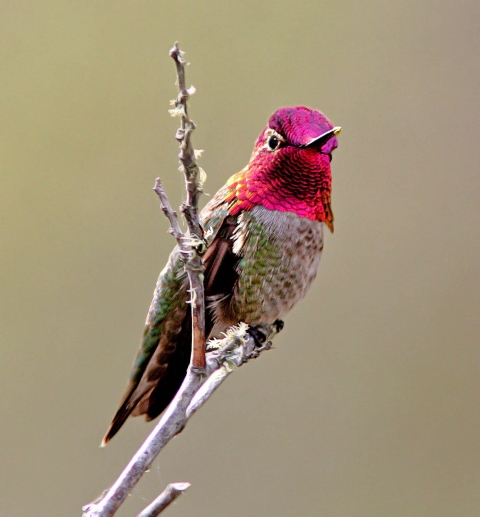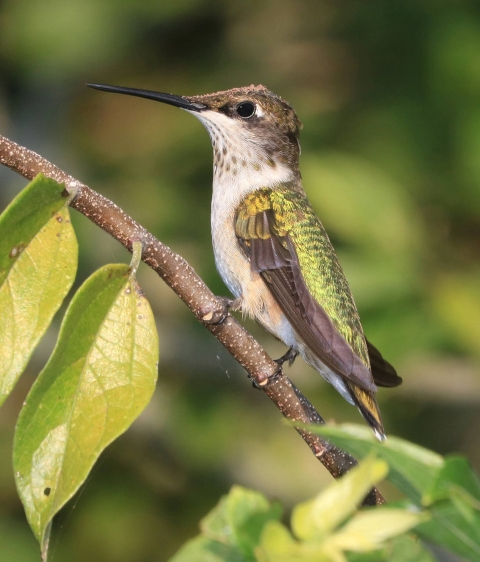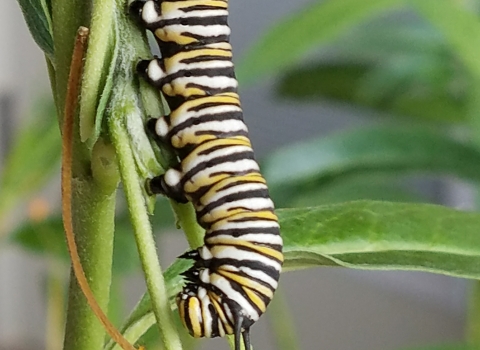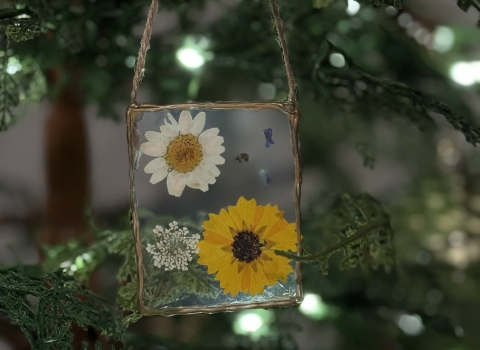Did you know that a group of hummingbirds is called a charm? Or that a red feeder is more likely to attract them than a blue one? In honor of National Hummingbird Day, take this quiz to test your knowledge of these tiny charmers.
1. In the United States, hummingbirds can be found...
a. Only in warmer areas, such as the South and Southwest
b. Only in aviaries and zoos
c. Only in photos and documentaries
d. Across the country, depending on the region and time of year
Answer: d: Across the country, depending on the region and time of year
More than 15 species of hummingbirds breed in the United States, and more than 25 species visit for part of the year. In the East, you’re most likely to see ruby-throated hummingbirds. In the West, look for broad-tailed, rufous and black-chinned hummingbirds, among others.
2. Hummingbirds pollinate plants by…
a. Transferring microscopic insects between plants
b. Transferring nectar between plants
c. Transferring pollen between plants
d. Telekinesis
e. None of the above; they’re not involved in pollination.
Answer: c. Transferring pollen between plants
Certain animals help carry pollen from the male to the female parts of plants, allowing them to reproduce. Three-quarters of flowering plants and more than a third of the world’s food crops depend on animal pollinators.
When hummingbirds drink from different flowers, pollen hitches a ride on their beaks and feathers. It’s a win for the hummingbird, the plant—and us!
3. True or False: Hummingbirds are vegetarians.
Answer: False.
Hummingbirds do consume nectar, a sugary liquid secreted by plants. However, they also snack on insects such as gnats and fruit flies. By planting a pollinator garden, you can provide both food sources and enjoy some natural pest control.
4. Hummingbirds prefer…
a. Berries, such as beautyberry and winterberry
b. Flowers, especially red, pink, yellow and orange ones
c. Small fish and tadpoles
d. Pizza
Answer: b. Flowers, especially red, pink, yellow and orange ones
Interested in planting flowers to attract hummingbirds to your garden? Check out the Pollinator Partnership’s online guides to pollinator-friendly native plants for your region.
5. The best time to put out a hummingbird feeder is:
a. Spring
b. Summer
c. Fall
d. Winter
e. It depends on where you live
Answer: e. It depends on where you live
Some areas enjoy hummingbirds year-round; others welcome them in the spring. For migrating hummingbirds, the best time to hang a feeder is a week or so before they arrive. Check out the suggested timing for your region on the Audubon Society website.
6. The sugar solution in a hummingbird feeder should be made with...
a. White sugar
b. Honey
c. Brown sugar
d. Artificial sweetener
e. Any of the above
Answer: a. White sugar
The Smithsonian National Zoo suggests one part table sugar to four parts water.
7. To maintain a hummingbird feeder, change the sugar solution regularly and clean the feeder with…
a. Dish soap
b. Plain water or a weak vinegar solution
c. Bleach
d. Nothing. There’s no need to clean the feeder.
Answer: b. Plain water or a weak vinegar solution
Cleaning products can leave harmful residue in feeders. Also note that the sugar solution should be changed regularly; spoiled solution can be toxic.
8. The following can pose a threat to hummingbirds that visit feeders:
a. Cats
b. Bees, ants, and other insects
c. Too-cold nectar
d. Spoiled nectar
e. All of the above
Answer: e. All of the above
To protect hummingbirds that visit a feeder:
- Hang the feeder out of the reach of cats.
- Change the sugar solution regularly.
- Consider buying a feeder with an insect guard or ant moat.
- Try hanging an incandescent bulb next to the feeder to keep the nectar warm or bring the feeder indoors on frosty nights.
9. Congratulations! You’ve spotted a visitor at a hummingbird feeder. What is it? (See photo below.)
a. Ruby-throated hummingbird
b. Anna’s hummingbird
c. Hummingbird moth
d. Drone
Answer: b. Anna’s hummingbird
Learn more about this colorful western hummingbird.
10. Behold, another backyard visitor! What is it? (See photo below.)
a. Bee hummingbird
b. Rufous hummingbird
c. Ruby-throated hummingbird
d. Little brown bat
Answer: c. Ruby-throated hummingbird
This is the hummingbird you’re most likely to see east of the Mississippi River. The picture shows a female; only the male has a ruby throat. Learn more about this bird.
Thank you for taking the hummingbird quiz. To learn more about how you can help pollinators, visit the Service's pollinator website.

